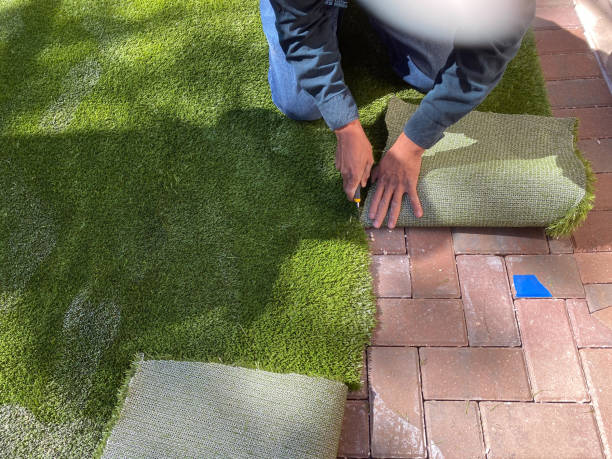Are you looking to spruce up their outdoor space with a modern, low-maintenance artificial turf?
Replacing tired, aging flagstones with high-quality fake grass can change the look of your garden in quite a spectacular way. The good news is that you don't have to remove those old slates before you start, as artificial grass can be laid over them, as well as concrete and tarmac.
Installing artificial turf between pavers is the perfect way to make a sophisticated upgrade to your patio or walkway without the hassle that comes with tending to natural turf. Let's walk through the steps for installing artificial turf between pavers so you can create a beautiful outdoor area in no time.
Replacing tired, aging flagstones with high-quality fake grass can change the look of your garden in quite a spectacular way. The good news is that you don't have to remove those old slates before you start, as artificial grass can be laid over them, as well as concrete and tarmac.
Start with a clear, flat surface
Before you start laying fake grass on your slab, make sure your surface is smooth, clean and free of things like stones, gravel, and leaves.
Treat any moss or weeds growing between the boards with a strong herbicide and remove them.
Use a level to check that your surface is completely flat. If there are any uneven areas, a thin layer of sand or other self-leveling compound will help fill them. Always do this on dry days.
If the gap between each board is greater than 25mm, this may cause the fake grass to sag once it is installed. The solution is to fill them with quick-drying cement. Always make sure the cement is dry before starting the installation process.
Spread the fake grass over the area to be covered, leaving an extra 5 cm on all edges. This will allow enough material to ensure a perfect edge.
Letting the grass sit for 2-3 hours will help remove any creases.
Once you are satisfied that the fake grass is crease-free, you can now start carefully trimming it with a sharp knife.
The nice thing about adding dry sand to your fake lawn is that it helps secure the installation and prevent any wrinkles or creases. It also helps protect the fibers and keep them upright, keeping your lawn looking its best.
It will be an advantage if you can find kiln-dried sand that is weed-free, as it will naturally inhibit weed growth.
Finally, after you've sprinkled the sand, you're ready to brush the fake grass. Do this in the direction of the pile and it will lift up the fibers nicely.




Share:
Why You Shouldn't Purchase Artificial Turf From Big Box Discount Stores?
What Should I Do when My Artificial Grass is Old